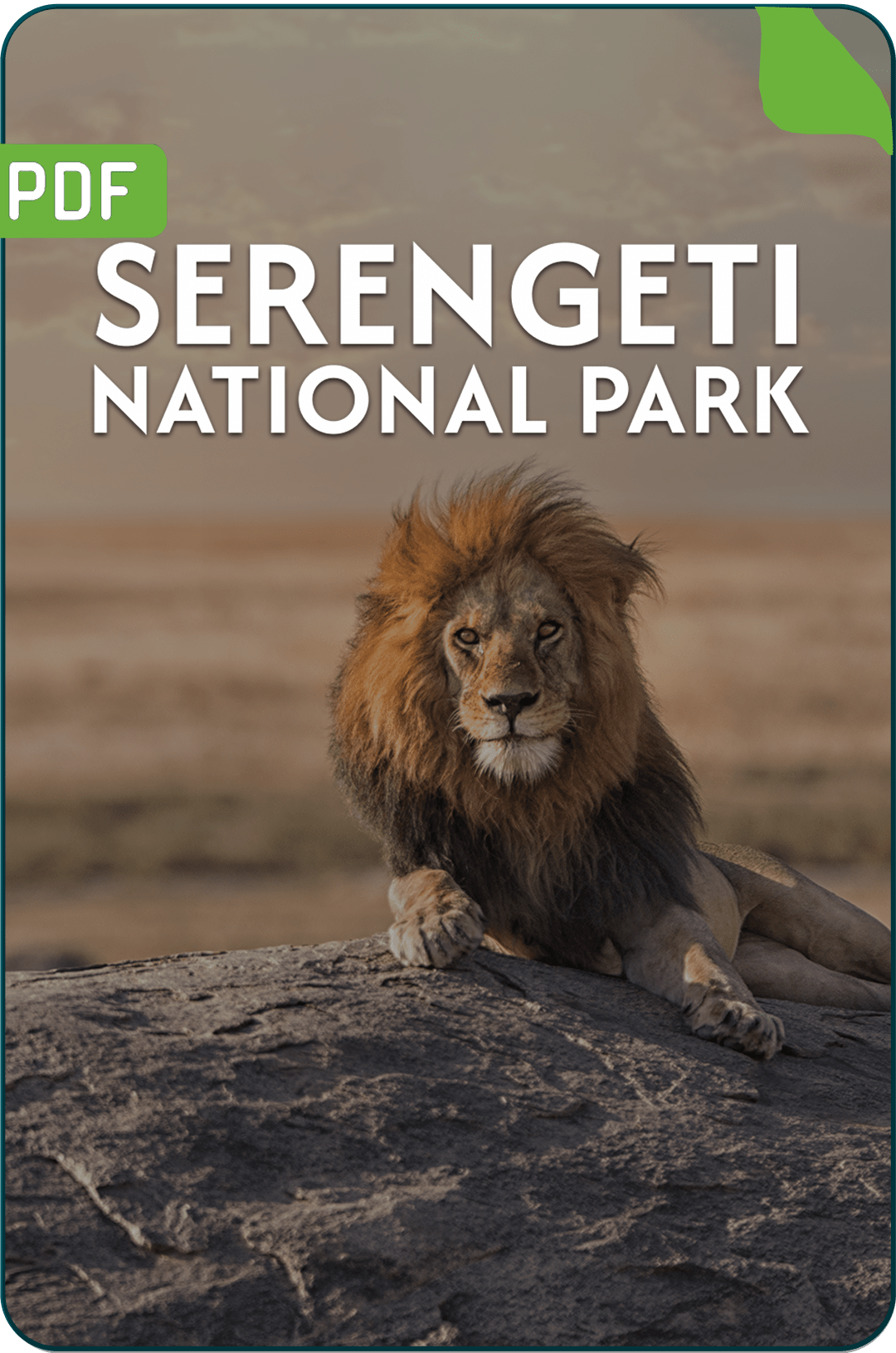Kilimanjaro Wildlife
Mount Kilimanjaro, often recognised for its towering presence, also hosts an array of wildlife that thrives across its varied climatic zones. Surrounding the mountain is the Mount Kilimanjaro National Park, spanning 1,688 square kilometres. It showcases Kilimanjaro Wildlife, highlighting nature's diversity.
From its early days as a forest reserve in 1921 to its designation as a UNESCO World Heritage Site, the park has been a refuge for over 154 mammal species, including unique creatures like honey badgers and aardvarks.
As you explore our Kilimanjaro Climbing Packages, remember that as you ascend through its distinct ecological zones, the presence of wildlife gradually diminishes, making each sighting a special moment.
Wildlife Diversity Across Kilimanjaro's Climatic Zones
A trip through the Kilimanjaro National Park offers a unique opportunity to witness these creatures in their natural habitat, especially as climbers ascend to elevations unreachable by any vehicle.
Here's an overview of different climatic zones across Kilimanjaro and what animals you can expect to see:
Distinctive Zones and Their Inhabitants:
- Cultivated Zone (800 m to 1,800 m): This zone is mainly farmlands with lesser wildlife.
- Rainforest Zone (1,800 m to 2,800 m): It is renowned for its unusual residents, like the black-and-white colobus monkey. Other nocturnal creatures like bush babies often roam this area, making it a mystical journey for trekkers at night.
- Afro-Alpine Moorland Zone (2,800 m to 4,000 m): This transition zone has fewer animals, but the experience is still enriching.
- Alpine Desert Zone (4,000 m to 5,000 m): The rough terrains here support limited wildlife.
- Arctic Zone (above 5,000 m): With its extreme conditions, only the most resilient species inhabit this zone.
While Kilimanjaro teems with life, remember, this isn't a typical African safari. As you climb, each wildlife sighting is a bonus to the exhilarating challenge of scaling this magnificent peak. So, keep those eyes peeled, and you might spot some Kilimanjaro Wildlife.
Did You Know? A unique spider species resides on the towering heights of Kibo, part of Mount Kilimanjaro's Wildlife! Entomologist George Salt discovered these arachnids live in the alpine zone, reaching altitudes up to 5500m.
The mystery deepens when considering their diet. While it's unclear, Salt believed these high-altitude spiders might feast on flies carried by the wind, even though they seem reluctant or unable to fly.
To withstand the challenging climate, these spiders have adapted to live underground—quite the marvel of Wildlife on Mount Kilimanjaro.
Mammals On Kilimanjaro
Following is the list of Animals on Mount Kilimanjaro National Park:
- Elephants
- Cape Buffaloes
- Black Rhinos
- Giraffes
- Leopards
- Hyenas
- Baboons
- Servals
- Monkeys
- Bush Babies
- Antelopes
- Aardvarks
- Mongooses
- Tree Hyraxes
- Porcupines
- Honey Badgers
We categorised these Mount Kilimanjaro Animals into two categories- common animals on Kilimanjaro Slopes and elsewhere and animals that are unique to Kilimanjaro and discussed them below.
However, a few things are to be noted here about Kilimanjaro Wildlife:
- While the majestic animals, including the iconic Big Five, primarily roam Kilimanjaro's base, spotting them near the camps is rare. Their footprints, however, might be a common sight on your journey.
- A variety of antelopes grace the landscapes of Kilimanjaro, such as:
- Red and grey duikers
- Abbot's duikers
- Mountain reedbucks
- Common elands
- Klipspringers
- Bushbucks
- While many Animals on Mount Kilimanjaro live in its lower regions, certain antelopes like klipspringers, common elands, and grey duikers occasionally venture into the moorland zone, offering a better chance for trekkers to spot them.
- Although honey badgers are carnivores known for their bold and fierce nature, you won't typically find them on the Kilimanjaro Climbing Routes. Consider yourself lucky!
Remember, the Wildlife on Mount Kilimanjaro offers diversity and surprises at every turn!
Common Animals to See on Kilimanjaro
Here's a closer look at some of the Mount Kilimanjaro Wildlife that you might come across during your ascent:
White Necked Raven
Recognisable by the white band around its neck, this raven is known for its intelligence. Its diverse diet includes fruits, insects, and even small mammals. They're commonly seen around campsites, often searching for food.
Colobus Monkey
Notable for lacking thumbs, this monkey has an eye-catching black-and-white appearance. Mostly spotted near Kilimanjaro's trailheads and in rainforests, they consume leaves, fruits, and flowers.
Bush Baby
Active during the night, these creatures have large eyes aiding in night vision. Their diet comprises insects and small animals. Their high-pitched cries are pretty distinctive.
Four Striped Mouse
More extensive than your average house mouse, they're seen near Kilimanjaro Campsites. Their diet includes plants, seeds, and human leftovers.
Blue Monkey (Diademed Monkeys)
Primarily found in Kilimanjaro's rainforests, this monkey isn't blue as its name suggests. It's grey and olive with white and black patches.
They dwell high in trees, relying on fruits, figs, insects, and flowers for sustenance. Because of their friendly nature, they are pretty easy to spot during Kilimanjaro Trek.
Jackson’s Chameleon
Famous for their colour-changing abilities, these lizards have unique vision and can capture insects with fast and elongated tongues. Kilimanjaro is home to two types: the three-horned Jackson's chameleon and the smaller two-horned Dwarf Fischer’s chameleon.
These species form an integral part of the rich Wildlife of Kilimanjaro. While climbing, always be respectful of their habitats and avoid disturbing them. One of the many rewards of ascending this great mountain is observing them in their natural surroundings.
Animals Unique to Kilimanjaro
When visiting Africa, many are eager to spot majestic creatures like lions, elephants, or giraffes. While these animals do reside around Kilimanjaro, seeing them is not common.
However, Kilimanjaro is home to several lesser-known, unique animals. While they're often elusive, it's worth being alert to sudden movements during your climb. Here are six intriguing Animals on Mount Kilimanjaro that you might encounter.
| Animal |
Description |
Diet |
Notable Features |
| Civet |
Agile and mostly nocturnal with a combination of black and white stripes and blotches on its fur. |
Omnivorous, sometimes prey on venomous snakes. |
Fluid from Civets was once used in the perfume industry. |
| Crested Porcupine |
Covered in defensive quills marked with alternating light and dark bands. |
Herbivorous, consuming roots, bulbs, and leaves. |
Quills can easily detach, posing a threat to predators. |
| Serval |
A medium-sized wildcat with golden-yellow fur marked with stripes and spots. |
Mainly rodents, but also birds, frogs, and insects. |
Known for its keen hunting prowess and elongated legs. |
| Abbott’s Duiker |
A forest antelope with a dark brown coat. |
Herbivorous, with a penchant for plant matter. |
It is named after Dr. W.L. Abbott and remains elusive in the wild. |
| Genet |
Small, agile mammals with a spotted fur pattern. |
Omnivorous, ranging from fruits to small vertebrates. |
Known for its agility and striking appearance. |
| Tree-hyrax |
These Nocturnal mammals are distantly related to elephants. |
Herbivores primarily consume leaves, fruits, and bark. |
They are recognised for their unique calls more than their sightings. |
| Aardvark |
Nocturnal mammal is known as the “African Ant Bear.” |
Feeds on ants and termites. |
It uses its long snout to dig and extract prey from its mounds. |
While the chance of spotting all these animals during a single climb might be slim, knowing about their existence and features can make your Mount Kilimanjaro Climbing Experience even more enriching.
Kilimanjaro Tours lets you witness nature's spectrum, from elusive mammals to vibrant birds. Here, every step brings a new wildlife spectacle. So, don't just climb; explore! Let us be your guide through the mountain’s wild side!
Birds On Kilimanjaro
In Kilimanjaro National Park, bird enthusiasts can be treated to sightings of many bird species, making it a delightful addition to the trekking experience.
Some Birds You Might Encounter:
- Vultures: Often seen soaring high, scavenging the landscapes.
- Buzzards: Medium-sized birds of prey with broad wings.
- Hornbills: Identified by their long, down-curved bill, often with a bright colour.
- Turacos: Exotic birds known for their vibrant colours.
- Shrikes: Often perched on high vantage points.
- Cuckoos: Recognizable by their distinctive call.
- Flycatchers: Small birds that feed on insects in flight.
- Barbets: Often brightly coloured with solid bills.
- Woodpeckers: Recognizable for their habit of tapping on tree trunks.
- Bee-eaters: Colourful birds that catch bees and other insects in flight.
- Sunbirds: Tiny, brightly coloured, and often seen hovering over flowers
Highlight Species
- The African Pygmy Kingfisher is a tiny beauty measuring 12 cm. It is often found in the forest areas of Kilimanjaro.
- The White-necked raven is a frequent visitor at Kilimanjaro's moorland campsites.
- Abbot's Starling is a rare bird in Kenya and Tanzania. It graces the Kilimanjaro forests with its two-toned elegance.
- African Pitta is dubbed the 'gem' of African birds; spotting one is a treat for birdwatchers.
- The vibrant emerald malachite sunbird is a sight to behold.
So, as you ascend the great Mount Kilimanjaro, watch for these feathered wonders. Each chirp and flutter will add more memories to your Mount Kilimanjaro Climbing experience.
Which Kilimanjaro Climbing Route is the Best for wildlife?
Our answer is the Northern Circuit Route. We believe it is one of the best routes to see Animals on Mount Kilimanjaro. Our reasons for saying this are:
- The journey on the Northern Circuit Route starts from the mountain's western side and then moves across the northern face. After reaching the peak, trekkers descend using the southeastern Mweka route.
- This means the Northern Circuit Kilimanjaro will take you through different habitats, eventually giving you enough opportunities to spot various wild animals.
- Moreover, with fewer trekkers on the mountain's northern slope, the probability of disturbing the animals is reduced. They aren’t frightened, thus offering you great sightings.
- Even the large herds of elephants from Kenya’s Amboseli National Park visit the northern slopes of Kilimanjaro.
Being a nine-day route, it’s evident that the Northern Circuit Route offers extended opportunities to see the Wildlife on Kilimanjaro compared to shorter trails.
What are the Wildlife Viewing on Other Kilimanjaro Routes?
Let’s start with the Rongai Route. This route begins from the northeast and descends using the Mweka trail. Like the Northern Circuit Route, it has two different routes for ascent and descent, giving trekkers ample chances to observe the Mount Kilimanjaro Animals.
Other Kilimanjaro Climbing Routes, such as Lemosho and Machame Routes, are famous for their wildlife encounters as they take trekkers through dense rainforests and diverse terrains.
- The journey allows travellers to experience different parts of the forest, which is the prime zone for spotting animals and birds on the mountain.
- More extended expeditions, like the Lemosho Route 8 Days, offer more chances to witness the Wildlife of Kilimanjaro and aid in better acclimatization.
We can say that when choosing a Kilimanjaro Climbing Package, consider the wildlife opportunities on the route alongside other vital factors. The richer the biodiversity you encounter, the more memorable your expedition will be!
Experience Kilimanjaro beyond the climb!
While the thrill of Mount Kilimanjaro Climbing attracts climbers worldwide, the quieter moments—the sight of a rare bird or an elusive mammal—enrich the journey. As you wrap up your exploration of Kilimanjaro, remember that it's not just about the climb but witnessing the multitude of Kilimanjaro Wildlife that calls the mountain home.
Explore Kilimanjaro Travel Guide
Find essential topics below to help you plan, prepare, and enjoy your Kilimanjaro travel experience fully.
Climb Kilimanjaro With Us
Get ready for a mountain adventure with real advice, smiling guides, and simple help that actually works. We’re with you from start to summit.
Frequently Asked Questions
Expect to spot smaller mammals like blue monkeys, bush babies, and tree hyraxes. There have been occasional sightings of larger mammals, but they're rare as you ascend.
While Kilimanjaro is home to animals like leopards and buffalo, encounters with dangerous wildlife during climbs are infrequent. Always follow your guide's advice for safety.
The Northern Circuit Route is often recommended for the diverse habitats it covers, giving climbers broader opportunities to observe wildlife.
Securing food and following campsite guidelines is essential to avoid attracting Animals That Live on Mount Kilimanjaro. Listen to your guides; they'll provide the best advice.
Absolutely! Kilimanjaro National Park hosts various bird species. Watch for birds like the white-necked raven, turacos, and the vibrant malachite sunbird as you trek.
Yes, a unique spider species has been found in the alpine zone of Kilimanjaro, indicating the mountain's diverse ecology.
Kilimanjaro is home to several distinct animals, including Abbott’s duiker and certain species of chameleons, making your trek even more special.
Animals On Kilimanjaro have adapted to their specific zones. For instance, creatures in the alpine zone have evolved to endure colder, harsher conditions, while those in the rainforest are adapted to warmer, wetter climates.
Simbo Natai, founder of African Scenic Safaris, crafts sustainable, meaningful Tanzanian journeys rooted in his deep local knowledge and passion.
Director



























 African Scenic Safaris #1 on TripAdvisor
African Scenic Safaris #1 on TripAdvisor 




